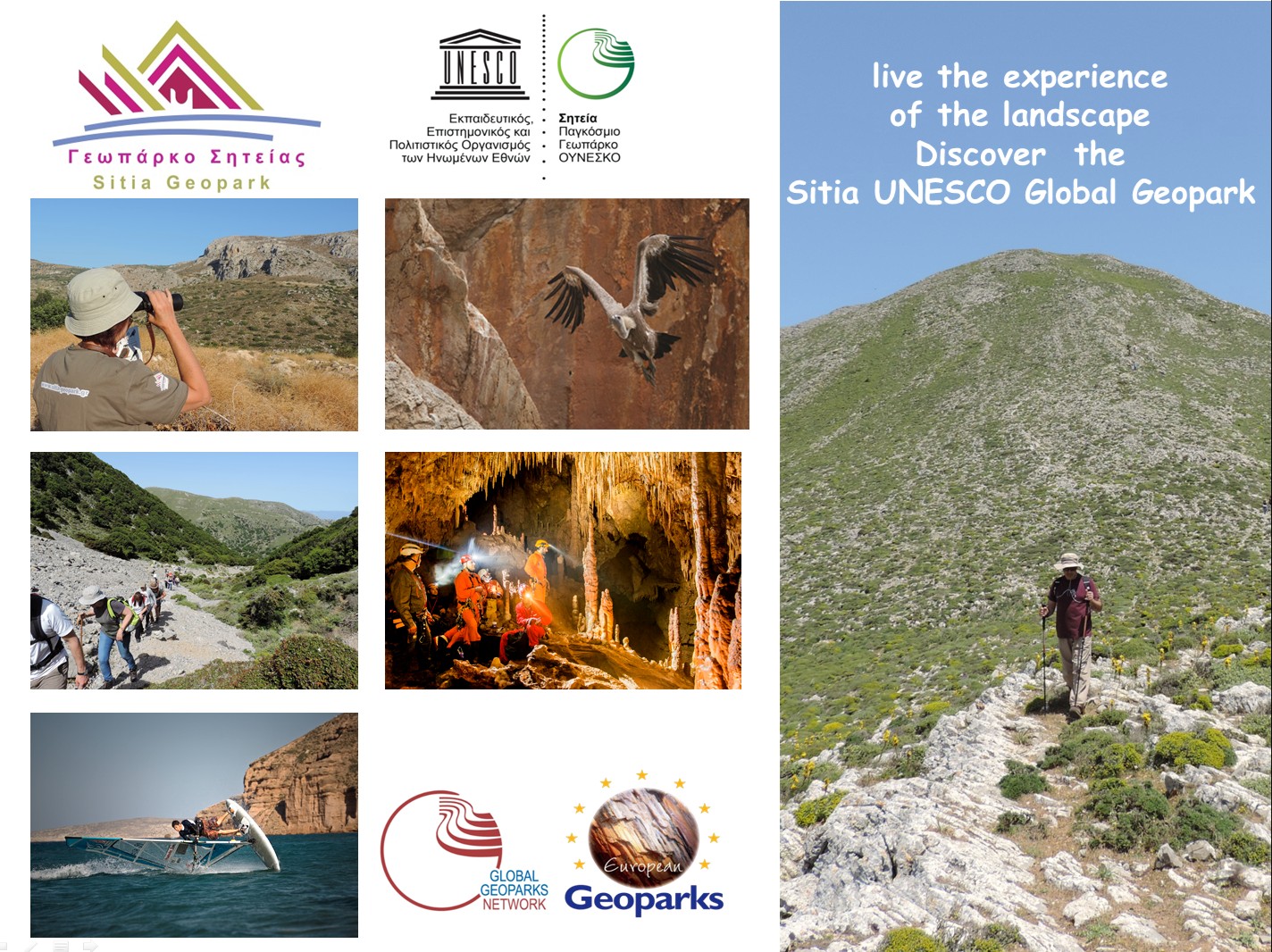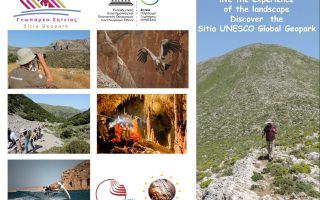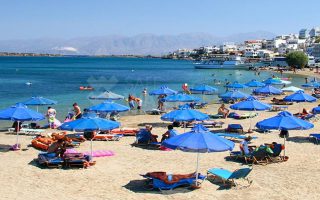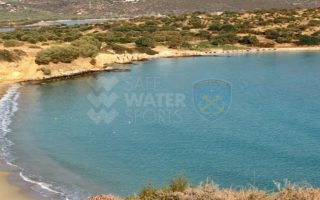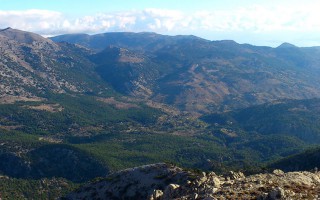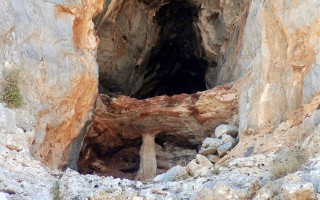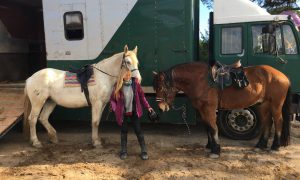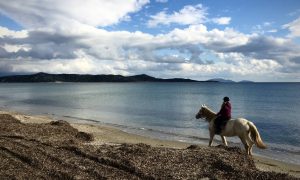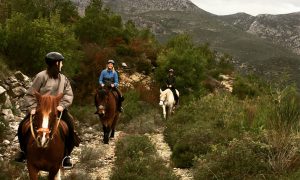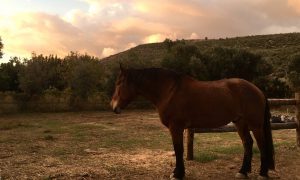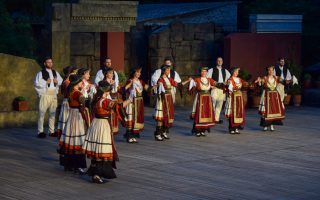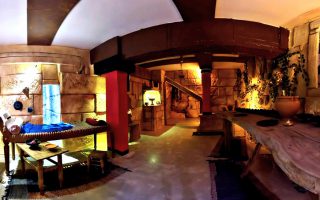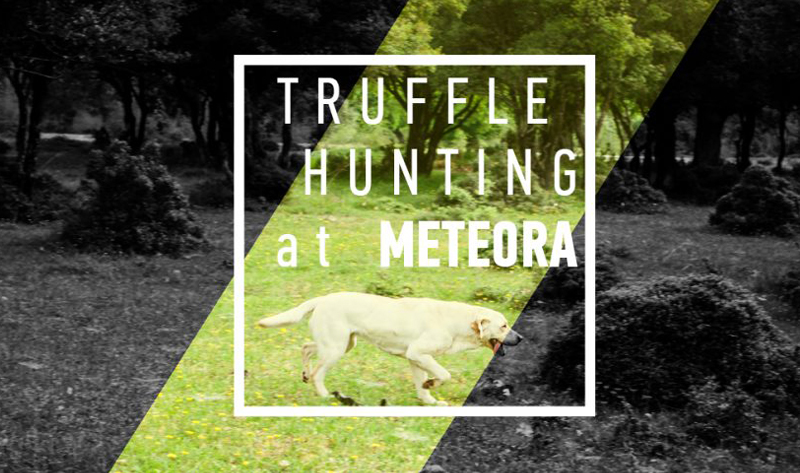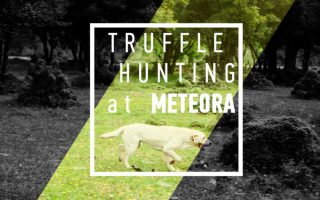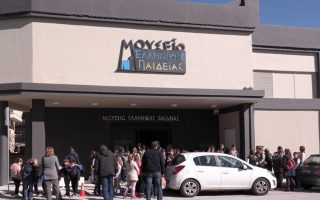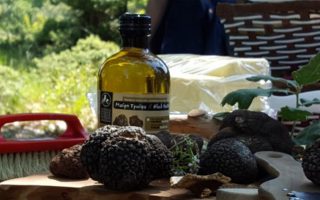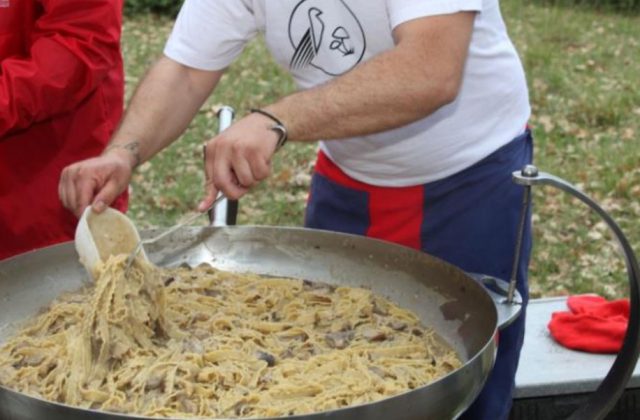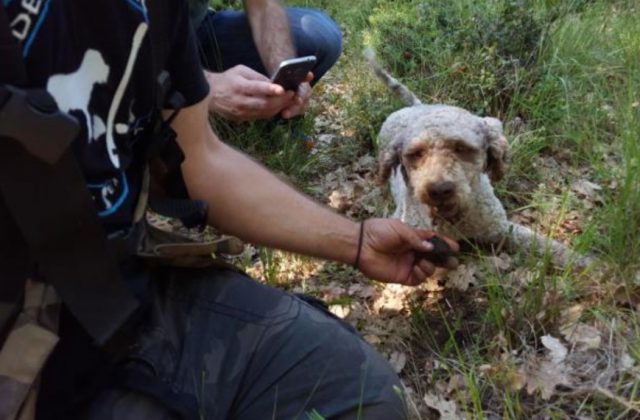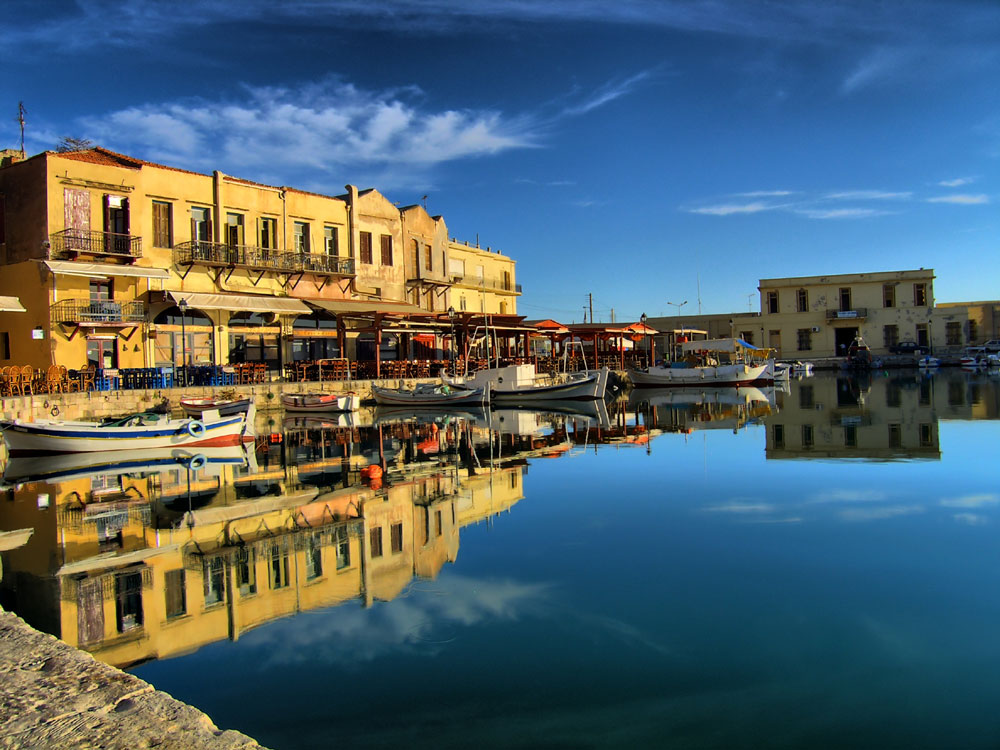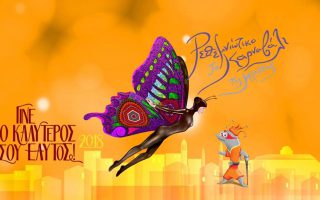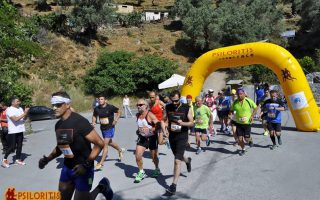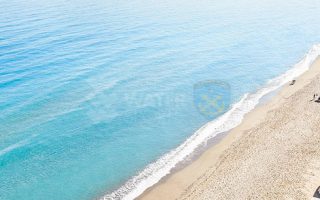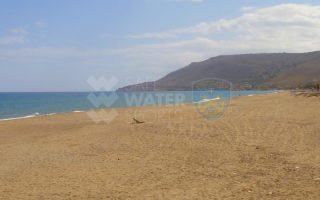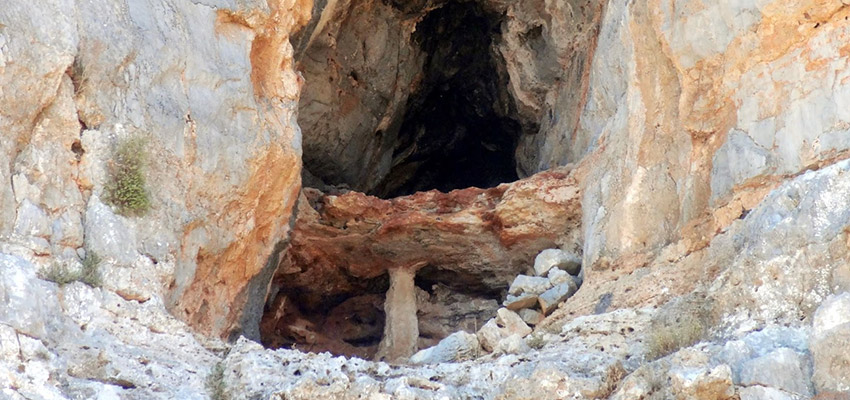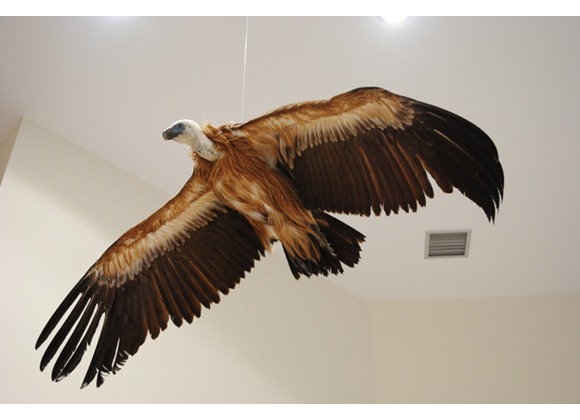When the Sitia region became a member of the UNESCO Geopark family, we had no idea just how much positive change this would bring!
This new aspect of tourism “Sitia Geopark”, is proving to be a considerable point of interest, especially in the alternative tourism market. The natural environment is no longer an obstacle for tourism development, on the contrary it is a great attraction for visitors.
We are seeing increasing interest in our Geopark from our customers, both individuals and tour operators from all over Europe. Sitia Geopark recently took part in online exhibitions’ of alternative tourism with Belgium, Poland, UK, Germany and France. We spoke with tour operators, journalists and travel writers. This type of tourism was something new to many of them and we detected great interest.
This is because our new venture is different and better than anything previously on offer!
Before our area was designated as a Geopark, the tourism product sold by the area of Sitia was Crete’, as promoted by all the island – Chania, Rethymno, Heraklion etc. Impossible competition!
“Sitia Geopark” is a totally new autonomous venture, found only in our area, fully compatible with alternative forms of tourism. It seems therefore that our region is slowly beginning to take a leading role, by fulfilling the needs of the modern tourist. The classic product of mass tourism and the trio of sun, sea and antiquities has completed its life cycle in these changing times and is naturally evolving into special and selective, ie alternative forms of tourism.
But what is “alternative tourism”?
And I quote the most appropriate description I can find: “Alternative tourism is the form of tourism, which is compatible with the social and environmental values of the region allowing both the local society and visitors to enjoy positive, worthwhile interaction and shared experiences. In other words, “alternative tourism” is the development that meets the needs both of the visitors and the region.
Three forms of alternative tourism have been developed and sold as package holidays to offices abroad in the last 12 years within the “Sitia Geopark” area.
The 1st alternative form of tourism is “walking tourism”. Over 25 marked routes are available with packages including accommodation, transportation, and guided tours for individual visitors as well as small groups of 6-15 people.
The 2nd form of alternative tourism – the largest alternative programme in our area for the last 18 years – is the sport of Windsurfing, which takes place on the beach of Kouremenos, Palekastro. The package includes accommodation in Palekastro area, transport and equipment (boat, sails) supplied by the 2 windsurfing stations located on the beach.
The 3rd form of alternative tourism is “cycling tourism”. Over 7 marked cycling routes are available within the Geopark area. The packages include accommodation in the area, transport and supply of city or mountain bike for individual customers or small groups of 6-15 people.
We are expecting a 4th very promising form of alternative tourism, “diving tourism”, to be added to our area with the creation of a diving park in the near future.
If asked today what the future tourism model for an area would be, I would say, 30% mass tourism and 70% alternative forms of tourism. The areas where mass tourism has prevailed show us that the above ratio is very difficult to achieve. To this end, we should consider the actual capacity of the area and we certainly need the support of government and the municipality.
Why choose 30% mass tourism? Mass tourism obviously controls the airlines and handles millions of people. Even though it creates many negatives in the host areas (for example Malia, Hersonissos, Faliraki, Rhodes, etc.), it also has 2 positives that we need in our area:
1) Direct flights from abroad to Sitia International Airport, offering easy and quick access to the destination and reduced package costs for customers.
2) New job opportunities in hotels/tourism for young people.
And why 70% alternative forms of tourism?
1) As far as revenue is concerned, one customer of alternative tourism equals
10 mass tourism customers.
2) It is more resistant to crises and pandemics. For example, regardless of the
Covid-19 pandemic, generally speaking small hotels, villas and apartments
in areas less developed developed continued to operate at a much lower
loss, whereas many large hotels and resorts remained closed in 2020 and
may well not open in 2021.
3) Not easily blackmailed by big tour operators.
4) Eco-friendly and local population-friendly as opposed to mass tourism.
5) The relationship between humans and the natural environment is restored.
6) Sustainable tourism development is created, by answering both the needs
of visitors and host areas, while protecting and increasing future
opportunities.
7) The local community profits the most as opposed to 2-3 people in the case
of mass tourism.
8) Repeat customers are created.
9) It attracts those in the high-end market with high standards, who would
never consider mass tourism.
This is dedicated to our future generations!
In no way do we want our actions of today to limit the ability of future generations to fulfill their own needs!
Kind regards
George Belibasakis
Web: https://www.sitia-geopark.gr/
TourMap: https://tours.nhmc.uoc.gr/geo/sitia/
We are a Greek equine tourism and recreation business based just one hour outside the city of Athens in Atticas historical area of Marathonas. We offer a vary of equine activities and experiential workshops also horseback holidays, combined outdoor activities and tour packages.
Our horses are part of the family and their heart and spirit the core of all our activities. We are passionate about our work and horse life style there for we love sharing with our guests our experience and passion for them also nature, history, outdoor activities ,adventure and travelling.
Visit our fb page https://www.facebook.com/Equitrek-Attica-106209160767582/
Find out more about our activities and don’t hesitate to contact us 693 869 7034
We are also very happy to announce that from now on we will share part of our space in the farm with Ippothesis equine welfare organization so rescued horses can live in big paddocks together until they find lovely homes to adopt them.
Our goal is to help https://www.ippothesis.gr/ with the rehabilitation and training of the horses but we also see the opportunity to spread awareness to people about equine abuse and welfare !!!
Source: https://www.unlimited-adrenaline.gr/equitrek-attica/p/en/138
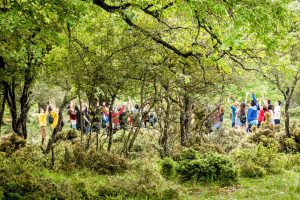 The Natural History Museum of Meteora and Mushroom Museum, during its effort to create alternative touristic activities, that showcase our nature’s wealth, is organizing and hosting truffle hunting activities in cooperation with travel offices.
The Natural History Museum of Meteora and Mushroom Museum, during its effort to create alternative touristic activities, that showcase our nature’s wealth, is organizing and hosting truffle hunting activities in cooperation with travel offices.
Special trained truffle dogs with their trainer are searching for this unique fruit of Greek nature. They offer an original experience that can be enjoyed by the visitors of the local area.
 In the same time, participants are provided with information about this special fruit. They learn about the kind of truffles that exist and how they can be used. In this way they enrich their knowledge about what is called “black diamond” that is “hiding” in the ground.
In the same time, participants are provided with information about this special fruit. They learn about the kind of truffles that exist and how they can be used. In this way they enrich their knowledge about what is called “black diamond” that is “hiding” in the ground.
The enjoyment doesn’t stop here! Participants have the opportunity to taste an exceptional truffle past dish in the forest!. This truffle pasta dish is cooked in an impressive cooking pan that can cover the feeding needs of 50 (!) people by a special chef.
 After the end of truffle hunting, the participants visit the Museum. They are guided around the natural history museum and the unique mushroom museum. After that, they can enjoy a mushroom product tasting with 5-6 kinds of mushrooms and traditional mushroom spoon sweet which are accompanied by a glass of local wine.
After the end of truffle hunting, the participants visit the Museum. They are guided around the natural history museum and the unique mushroom museum. After that, they can enjoy a mushroom product tasting with 5-6 kinds of mushrooms and traditional mushroom spoon sweet which are accompanied by a glass of local wine.
Undoubtedly, this is an experience that many wish to live. Now they have the opportunity. Enjoy!
The program of truffle hunting is:
10.00: Leaving from the Museum
10.30: The truffle hunting begins!
11.15: Truffle pasta dish cooking
12.15: End of the truffle hunting
12.45: Visit to the Museum, guided tour, mushroom product tasting
13.30: End of program.
For more information visit: www.meteoramuseum.gr www.trufflehunting.net, or email us at:
info@meteoramuseum.gr info@trufflehunting.net or call us: 00302432024959.
Source: www.meteoramuseum.gr
A new experience for every visitor
Luxury for few becomes opportunity for many

 A UNIQUE EXPERIENCE
A UNIQUE EXPERIENCE
The Natural History Museum of Meteora and Mushroom Museum is proposing an amazing experience: Truffle hunting under the rocks of Meteora! In the beautiful and unknown forests of the region, near the city of Kalampaka, visitors have the opportunity to enjoy a unique truffle hunting, to taste a delicious pasta dish with truffles that are found by truffle dogs, to visit the Museum, to try various mushroom products and to try an exceptional local wine. This is a complete suggestion, which is unique in Greece. The comparison with similar foreign activities indicates qualitative and economically superiority. Experience the difference and enjoy!
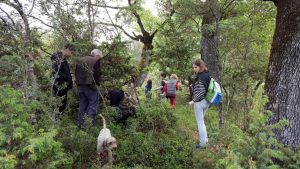 Meteora: An amazing truffle hunting area in Greece
Meteora: An amazing truffle hunting area in Greece
The area of Meteora is a suitable place for truffle hunting development. In the region you can find wild truffle. It is also an easily accessible place, where a bus can reach very comfortably the hunting areas.
Our goal is to mark the region as a truffle hunting areα in Greece. The visitor will have the opportunity to experience an alternative activity either in combination with a visit at the Monasteries and other sightseeing, or independently. Truffle hunting can cover the most part of the day, even the whole day.
The hunting area is charming, the truffle hunting is amazing and the truffle pasta dish that is cooked with the found truffles is unforgettable! The fact that this proposal is combined with a visit to one of the few Mushroom Museums of the world and the mushroom product tasting that is offered in the Museum creates an original and unique experience.
The number of participants is between 4 and 40 people and the price per person depends on the number of participants. Less than 4 people can also form a truffle hunting group, provided they cover the minimum cost.
THE EXPERIENCE
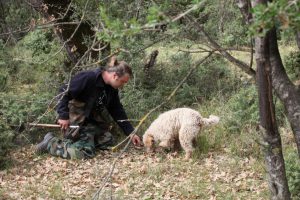 The truffle hunting
The truffle hunting
Christos and his truffle-hunting dog, Brio, are waiting for us! The moment we meet the truffle hunting begins. We discover the first truffle, the second, the third… Brio is unstoppable and we don’t lose him from our sight. After a while he stops. We have seen his abilities and it is Christos turn to play his role.
 The truffle pasta dish
The truffle pasta dish
Christos puts his cap on and he starts cooking. He uses an innovative pan that can fill 50 dishes. He will cook a super delicious truffle pasta dish, in which he will add wild mushrooms too. During the cooking process, Christos reveals the secret of truffle. The pasta dish is served and the bottles of wines are opened. This is how a tasteful heaven looks like!
The Museum
After lunch, we return to the Museum. We are tour guided around and focus mostly on mushrooms. Then it is time for mushroom delicacies! (Both savory and sweet.) Rich mushroom flavors are there for us to taste. These mushrooms products can be bought from the souvenir shop of the Museum either for consumption or as gift. There are 51 (!) different mushroom and truffle products to choose from. Their package is exceptional and they were created by the Museum, following high quality standards.
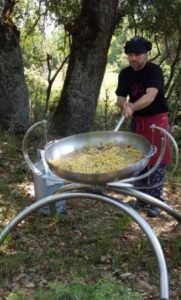 The schedule
The schedule
10.00 Departing from the Museum
10.30 The truffle hunting begins!
11.15 Truffle pasta dish cooking
12.15 End of truffle hunting
12.45 Visit to the Museum, guided tour, mushroom product tasting
13.30 End of program
Note: The activity can be scheduled in different ways too: afternoon hours, depending on the season. It can even be combined with other activities in the future (e.g. visit to wineries, creameries e.tc)
For more information visit: www.meteoramuseum.gr www.trufflehunting.net, or email us at:
info@meteoramuseum.gr info@trufflehunting.net or call us: 00302432024959.
Source: www.meteoramuseum.gr
Rethymno, the prefecture between the towns of Chania and Heraklio, abuts the Cretan Sea to the north and the Libyan Sea to the south. Initially the town of Rethymno, capital of the prefecture, was built on the cape of the northern shore.
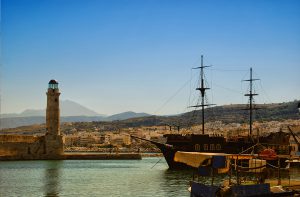 The developing town gradually stretched along the northern sandy beach, which has a total length of 13 km. The terrain of the prefecture is mainly mountainous with multifarious morphological changes such as imposing gorges, a large number of caves, lush valleys and small rivers. Mountains and mountain ranges dominate the interior of the prefecture. In the east rises Mount Psiloritis, or Ida as it was called during ancient times, with its sacred cave of Zeus, and south west the mountain range of Kedros; together the two massifs border the beautiful valley of Amari.
The developing town gradually stretched along the northern sandy beach, which has a total length of 13 km. The terrain of the prefecture is mainly mountainous with multifarious morphological changes such as imposing gorges, a large number of caves, lush valleys and small rivers. Mountains and mountain ranges dominate the interior of the prefecture. In the east rises Mount Psiloritis, or Ida as it was called during ancient times, with its sacred cave of Zeus, and south west the mountain range of Kedros; together the two massifs border the beautiful valley of Amari.
On the north easterly border of the prefecture rises Mount Kouloukounas also called Talaia Mountain, south of the town of Rethymno is Mount Vrysinas, and in a south westerly direction lies Mount Kryoneritis. A few areas of flat land can be found mainly in the northern coastal region between the massifs. There as well as along the south coast a large number of beautiful sandy beaches with crystal clear water have formed.
The “temperate Mediterranean” climate with its hot summers and its long periods of rainfall guarantees ideal temperatures ranging from 14º C in winter to 29º C in summer. Occasionally strong northerly and warm, indolent southerly winds interrupt the mild climate between the seasons.
Good-hearted and hospitable the villagers work hard, while they continue in the traditional way to grow olives, to produce oil, wine and raki and to make a living from stock breeding and dairy products. Apart from the traditional every-day life they also respect their religious holidays to the letter – Christmas, Easter, weddings, christenings and religious festivals.
They also remain faithful to the tradition of agricultural and stock breeding festivities, which are organised in the event of harvesting, testing the produce or any stock breeding procedure. Vine-harvest, the production of raki in traditional cauldrons, the shearing of sheep, and the collecting of olives is often turned into a true feast, during which friends and relatives gather and offer their help. Whenever they do not work or enjoy themselves drinking raki, their energy and sensitive creativity finds expression in handicraft and works of art.
In Rethymno a variety of popular crafts have been kept alive and are still practised such as pottery, basket weaving, woodcarving, stone masonry and weaving. Some villages are famous for exclusively practising a particular handicraft like for example stone masonry in Alfa, pottery in Margarites and weaving in Anoghia.
Source: www.rethymnon.gr
Any place in Crete is sure to fascinate visitors. The island is reputed for its amazing mosaic of landscapes – each one, however, retaining its own character, its own identity and beauty. The eastern part of Lassithi is considered to be the low-key aspect of Crete, one of peace, quiet, things being done in a relaxed way, hospitality.
It is the corner of Crete with the even-tempered mountains, the “smiling shores”, the fine beaches and the countless Blue Flag beaches. Not to mention the dunes in its south coastline and on its small islands in the Libyan sea, and the hot and life-giving sun shining for almost three thousand hours a year − the highest annual sunlight average in Europe!
Lassithi is the Crete of large and renowned ancient cities, Minoan palaces and ports , medieval monuments, traditional villages, unique landscapes, immense olive groves, verdant vineyards, gardens, orchards. It is a place having to offer enchanting cultural and nature-loving treks to canyons, caves, forests, agricultural landscapes, ancient paths, habitats, monuments, castles, monasteries, countryside churches, villages. A place with a long tradition in tourism, high-quality services, excellent resorts renowned the world over, hotels having received numerous distinctions internationally, and all sorts of outstanding tourist accommodation, built at unique locations.
A decentred and, at the same time, “multi-centred” structure is one of the most characteristic features of Lassithi. There are four towns in the area – beautiful, functional, and full of life and movement. Agios Nikolaos is built on five small hills and known for its picturesque lake, indented coastline and cosmopolitan colour. Ierapetra, with its Kale fortress, its immense sandy beach, its spaciousness and its never-ending summer, claims the title of the “nymph of the Libyan sea”. Sitia, with an amphitheatric layout, the Kazarma fortress, the picturesque old town, a vivid island colour and a strong sense of the sea, is the town of high spirits and fun. And Neapoli, with its fine and functional square, long historical tradition, old mansions and peaceful environment, is the town of intellect and literature.
The greatest advantage of Lassithi is that, no matter which part of it one may be at, one can, in a very short while, find oneself in a town or beach! Thus, all the visitors of the area, even those who are staying at mountain villages, can very easily have access to services, town living and the area’s sublime beaches. But the reverse is also the case: those who live in the towns have, very close to them, beautiful and cool villages with traditional taverns and coffee shops, picturesque back streets and squares, old churches and houses, and of course these follow the old paces of life, those of calmness and slowness, of a philosophical disposition and of the traditional hospitality. Such are the seaside villages of Sissi, Milatos, Elounda, Plaka, Kalo Chorio, Mochlos, Palekastro, Zakros, Kserokambos at Ziros, Goudouras, Makris Gialos, Koutsouras, Achlia, Agia Fotia, Ferma, Koutsounari and Myrtos at Ierapetra. In the inland, such is the Lassithi Plateau with Tzermiado and Agios Georgios, Kritsa near Agios Nikolaos, the Chandra – Ziros Plateau, the unadulterated villages of the Sitia province, etc.
Source: www.incrediblecrete.gr
It lies to the North-Northeast of Kato Zakros. We arrive at the cave either after a one-hour walk from Kato Zakros or from the beach of the same settlement by engine-vessel (20-25 minutes) and after that, we follow a tiresome ascending route (15 minutes walk). The elevation at the entrance attains 105 metres. Stones consist of limestones from the upper Cretaceous and of dolomites from the Triassic period. A little more west of the cave there is an elevation called Traostalos (elevation: 515 metres).
Pelekita (“hewn” in English) is the name by which the whole area is known. It comes from the quarry lying underneath the cave, near the seashore, where people used to extract hewn stones from the Meocene marly limestone deposits that exist there. Another name of the cave is Sikias Spilios (“Cave of the Fig Tree), due to the big fig tree that exists on the right side of the entrance under the cave, from where the view to the sea is breathtaking. Pelekita Cave is one of the biggest in Crete. Its total length attains 310 metres.
It has large chambers up to 45 metres in width and quite high. Corridors of a total length of 700 m approximately can be exploited. The cave takes up an area of 500 square metres approx. but if its inclinations are taken into account, the area is much more bigger. The first time it was roughly mapped and studied was by El. Platakis on 11th August 1963. A full mapping of the cave was conducted end of November 1969by members of the Greek Speleological Society led by I. Ioannou.
The entrance to the cave is large (11,5 in width, 6 metres in height). After that, the first chamber opens up (22 metres in length, 20 metres in width and 7 metres in height). Its floor is sloping with many rocks and low, artifical walls. To the left, there is an expansion that leads to a narrow passageway (0,2 metres), which later attains 6 metres. Here, we come across artificial walls, too.
After the first chamber, a passageway (14,5 metres in width and 2,30-7 metres in height) leads to the second chamber, which is big and very spectacular (65 metres in length, 45 metres in width and 15 metres in height) with sloping floor and big rocks that have fallen off the ceiling. On the rocks, there are small stalagmites.
At the beginning and on the right of the chamber there are majestic pillars and spectacular stalagmites, one of which has leaned over the rock touching it with its tip. A little further from the centre of the chamber, there is a nice platform with stalagmites, from which the view to all directions is quite impressive. The ceiling looks resembles a beautiful vault. On the right of the platform near the walls of the chamber there is a 15 metres deep pithole. On the left of the platform, the descent is very steep.
There, on a solid rock the geological decor is marvellous, forming cascades. The floor inclination continues to be steep. At the depths of the chamber there is a passageway, which attains 6 metres. From there begins a spectacular corridor, which is 10 metres in length and 4 metres in width, leading to another chamber with stalagmites (20 metres long, 17 metres wide and 8 metres high). Here, we are in a depth of 43 metres from the entrance of the cave.
At the end of the chamber we come across a 7,5 metre wide 5 metre high passageway. If we go down the passageway, we come across a third chamber with a floor that is sloping up to 35 metres and then it becomes ascending for 65 metres. As soon as the visitor enters the chamber, they become impressed with its size, with the majestic beauty of the natural decor and with the absolute calmness that evokes strong emotions. Its length is 100 metres, its width is 40 metres and its height exceeds 15 metres. Huge pillars and bulky stalgmites elevate from the floor, their height exceeding 10 metres. At the base, their diameter attains 3 metres.
All those make up a breathtakinly beautiful, majestic whole. Also in that chamber there is a big balcony, from where the visitor enjoys the glorious spectacle. The ascending part of the floor makes it very difficult to walk on, it is almost entirely covered with big rocks, very slippery and we need to climb up on many occasions. The chamber ends up in a passageway 9,5 m in width and approx. 5 metres high with many rocks scattered on the floor. The floor becomes sloping and leads us directly to the fourth chamber, which is 60 metres in length, 10-22 metres in width and 5 metres in height. The last part of that chamber presents a rich natural decor made of white pillars and beautiful stalagmites.
At the edge of the chamber, there is a cluster of small pillars and between them there is a narrow passageway, 1,2 metres in width. From there, we enter the last chamber of the cave (33 metres in length, 6 metres in width and 0,5-2 metres in height). On its right, a small corridor is formed and if we follow it, after 8 metres we come across a junction of another two very narrow corridors. Near the end of the chamber there is a small pond (5,5 * 1,2 metres) with water up to 1 metre deep.
After the pond, the floor is ascending ending up to a very narrow passage (0,30 m in width). Maybe there is more to it, however access is impossible. Here, we are in a depth of 51 metres from the entrance of the cave (vertically). This is the deepest part of the floor. Visitors must not go further than the pond or enter the corridor with the junctions. It is very dangerous and unsafe, since the floor (even near the pond) collapses when someone passes. Moreover, mud and other materials fall of the ceiling that may easily obstruct the exit.
The cave is a bed of an underground river, which is no dried up with the exception of the pond. From all parts of the ceiling small and also very big rocks have fallen off. The Cave Pelekita has been characterized as a cave of international tourist interest. The entire area with its magnificent cave, the Minoan palace of Zakros, the peak sanctuary of Traostalos, the Gorge of the Dead and the wonderful beach make up a whole of great significance for tourism.
Source: www.incrediblecrete.gr
The AMAZONAS PARK, a public park for birds in the midst of the mountains is a very special park. In the course of time this park has developed into homes for parrots which have been handed in for various reasons by their former owners. Man considers the advantages that he has by keeping a parrot as a pet: he wants to have a partner he can talk to and caress whenever he feels like it.
A parrot is able to convey to man the feeling of mutual understanding because of its intelligence, docility, bond with man and ability to speak. Thus a special, quite personal relationship between man and animal develops in which the animal wholly complies with the needs of the human being whereas man hardly ever fulfils the needs a bird has because these are almost completely unknown to him.
Website: www.amazonaspark.gr
Source: www.incrediblecrete.gr
The history of this land has been flowing for thousands of years alongside the history of its people. And although the time of humans usually leaves gaps and unexplored points, the time of the land in Sitia has recorded its marks in every nook and cranny: on the rocks, in the ravines, in the caves and in its unique gorges.
Website: www.sitia-geopark.gr
Source: www.incrediblecrete.gr
In the area, it is known as Rapas cave. However, it is more widely known as Milatos cave. It lies east of Milatos. From a village, there is a road leading you to the cave area after 2,5 kilometres.
From there, if we follow a path for 15 minutes, we arrive at the entrance of the cave which lies at an elevation of 155 metres. The cave has 8 small and big entrances along 40 metres, arranged on three different horizontal levels.
We use the large central entrance, which is 9 metres in width and 2 metres in height. The rigth entrance (access to the exterior part is difficult) allows for the daylight to illuminate the chamber where the church is situated. Both those entrances lead to the main part of the cave. The others lead to the left smaller part of the cave. In the first part of the main chamber, a church was erected in 1953 dedicated to Saint Thomas.
There, a liturgy (Sunday Mass) is held once a year in commemoration of the Saint, that is on “Thomas Sunday (Second Sunday of Easter). On that day a local celebration of national character takes place in the area.
Near the church, there is an ossuary where some of the sacred relics of victims that died in a battle in 1823 (during the Greek Liberation War against the Turkish Occupation) are kept. After the church, the floor becomes sloping and in the end it becoms horizontal.
In all areas of the cave, there are many small and big pillars arranged in clusters, which constitute an amazing spectacle. Stalagmites are fewer, however very spectacular. Stalactites are scarce. Pillars divide the cave into many chambers.
The cave has been opened up in Cretaceous limestone, at a precession of which lie the entrances. What we can see today are the remains of a bigger undergroung sinkhole that used to expand mainly to the part of the gully. The total length of the cave attains 75 m, the width in the entrance area is 45 metres, which becomes narrower and narrower as we walk further into the cave. The deepest part of the cave is 12 metres lower than the entrance level.
Circulation is easy in many areas. After exploitation of the cave, the walking path will attain 200 metres. The cave has been characterized as a cave of great national interest. It was mapped by El. Platakis on 28th August 1953, while a more detailed mapping was carried out by members of the speleological society led by Anna Petrochilou on 7th December 1969.
Source: www.incrediblecrete.gr
- 1
- 2

